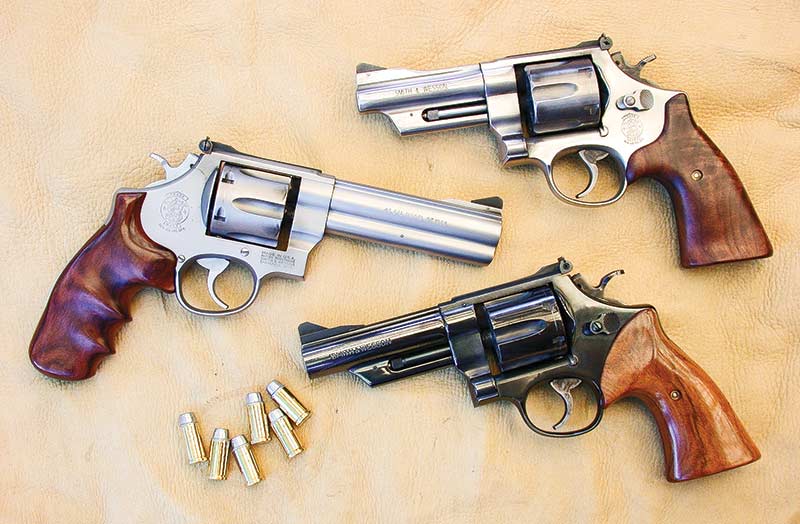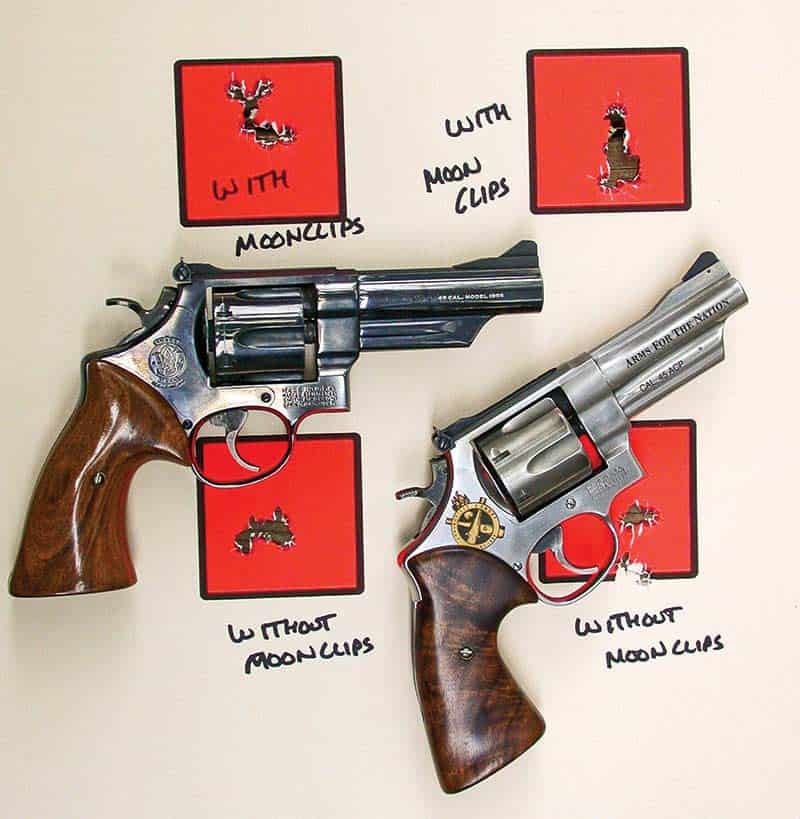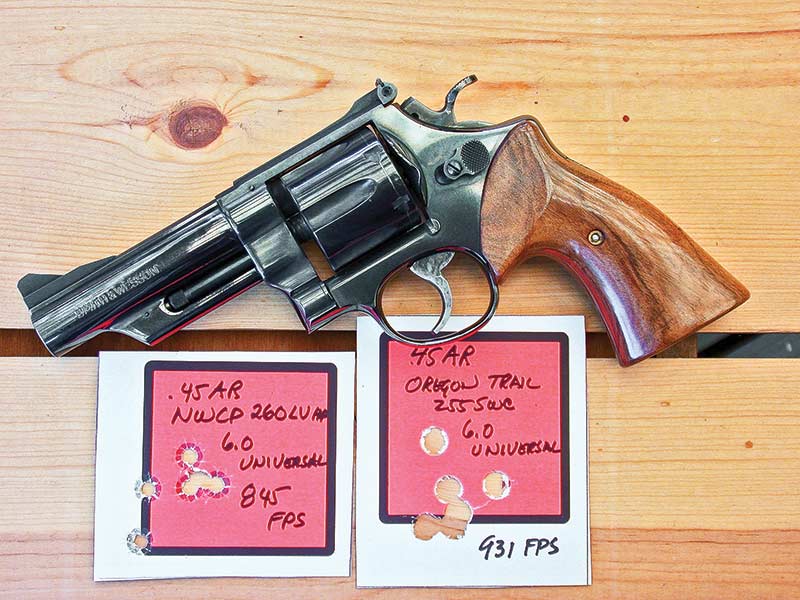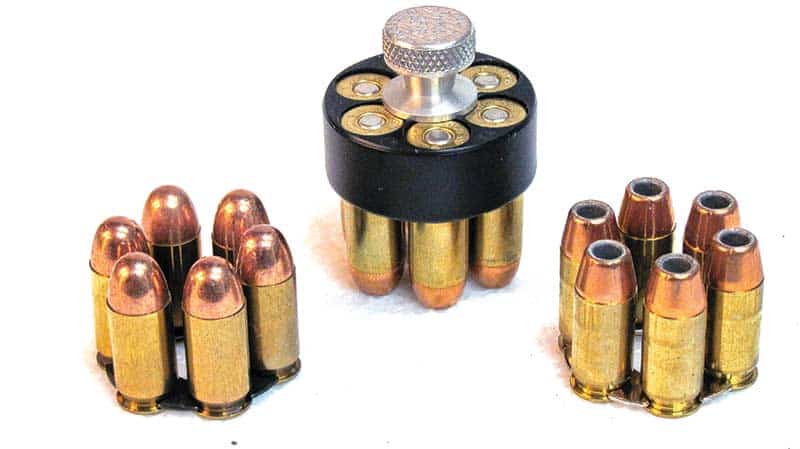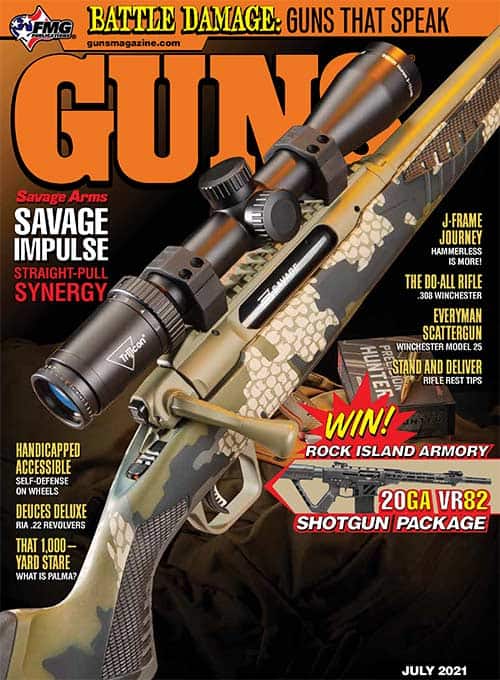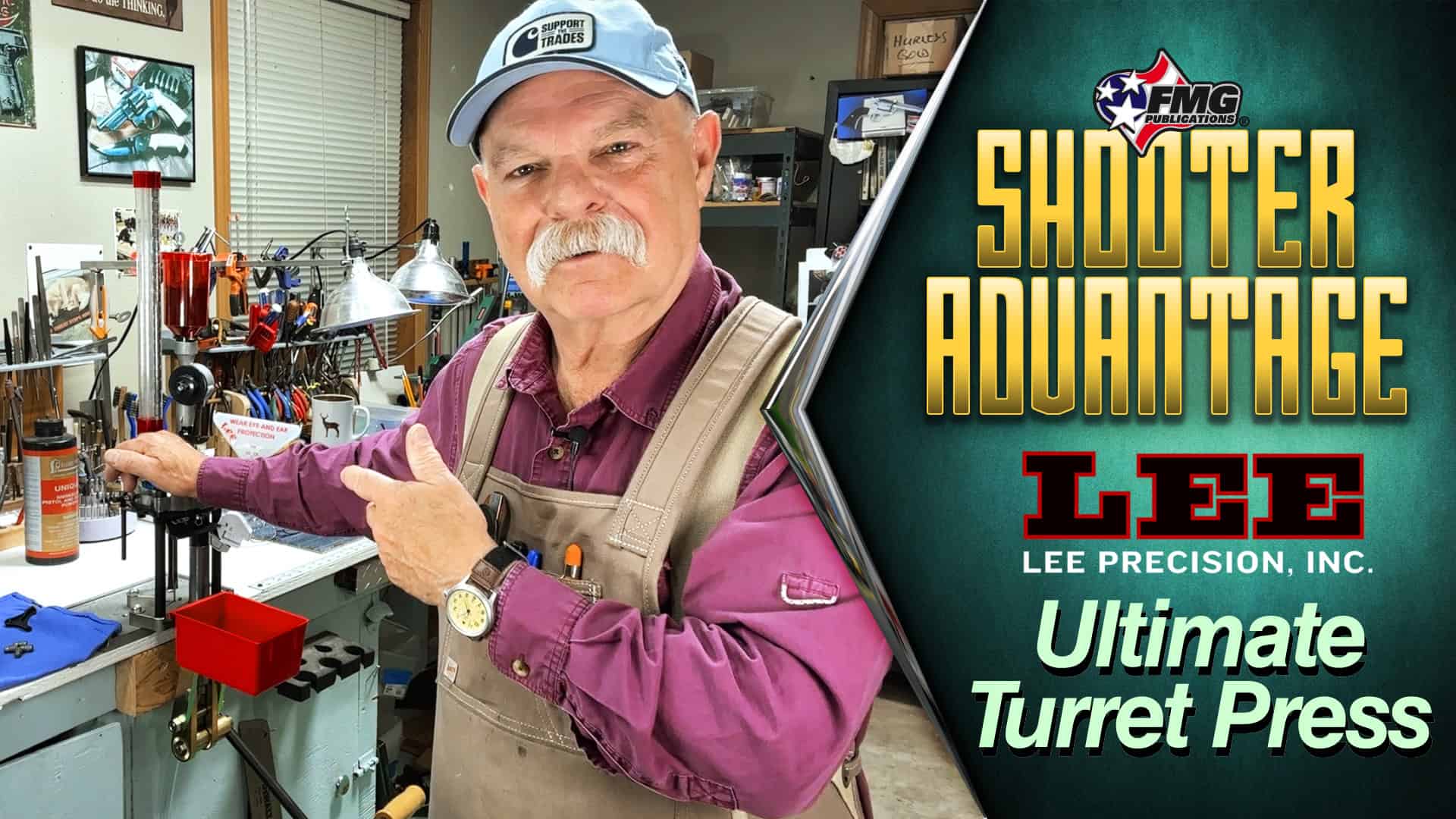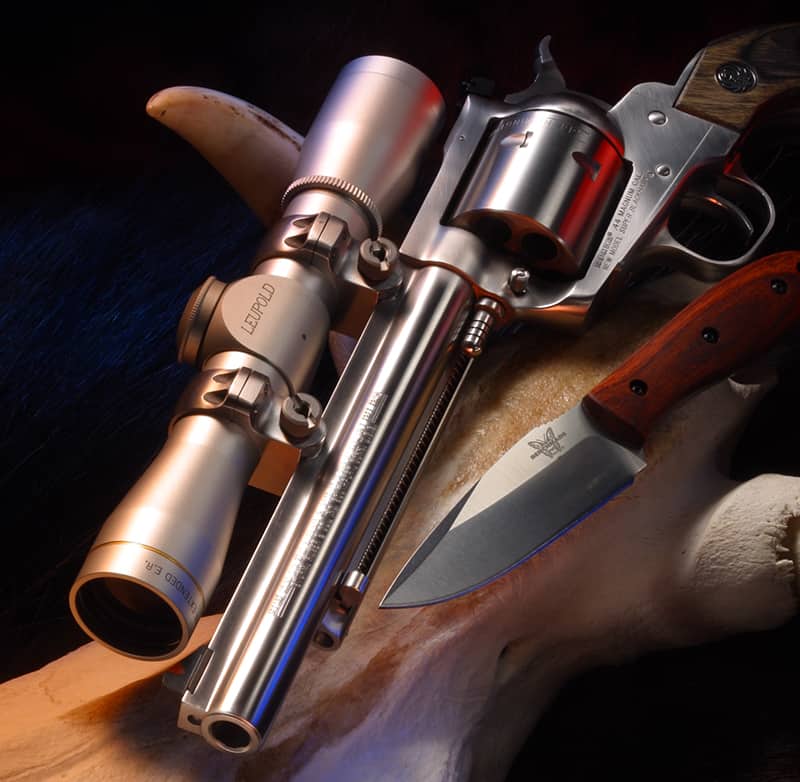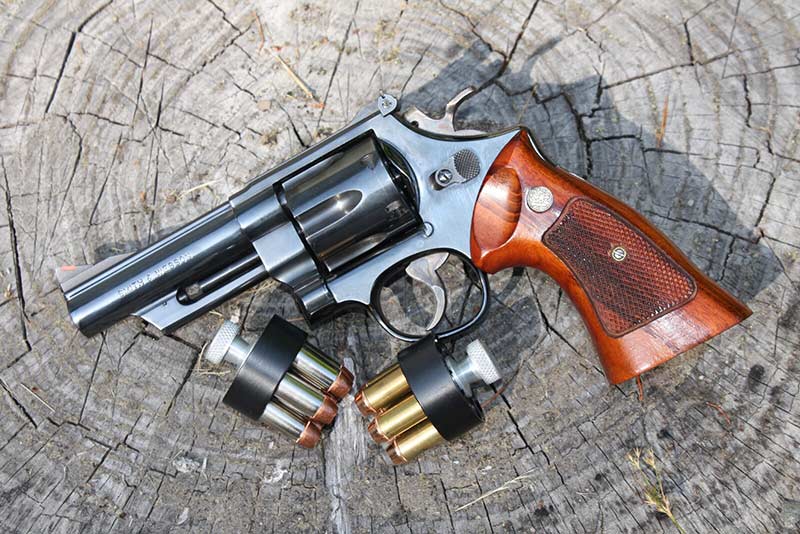Take Up The Challenge
What the factory did not do, I decided to do. So, I had a 1955 Target Model .45 Auto Rim cut to 4" turning it into a very handy packin’ sixgun. With the arrival of stainless steel models, we began to see some 4" .45 Auto Rim revolvers from Smith & Wesson. We mentioned the Model of 1988/Model of 1989 when we discussed the .45 Colt version. In 1994 Smith & Wesson produced the 4" Springfield Armory Bicentennial Edition which was produced by the Performance Center and offered by Lew Horton Distributors. This was basically a Model 629 .44 Magnum Mountain Gun chambered in .45 Auto Rim. In 1999 the Performance Center produced a 4" slab-sided barreled 625 for RSR Distributors. In 2005 the Model 625JM was produced as part of the Jerry Miculek Professional series with a 4" full underlug barrel and chambered in .45 Auto Rim. Of course, for speed shooting Jerry uses full moon clips with .45 ACP ammunition.
A most interesting and practical packin’ pistol was introduced in 2005 as the Thunder Ranch Special. This blued Model 22-4 has a 4" barrel with a pinned half-moon front sight reminiscent of the original found on the Model 1917. Instead of the round butt grip frame prevailing at the time, this one came with a true N-Frame square butt. This same basic sixgun with the 4" barrel was offered in the Classic Series in three versions, nickel-plated, blued and with a color case hardened frame.
